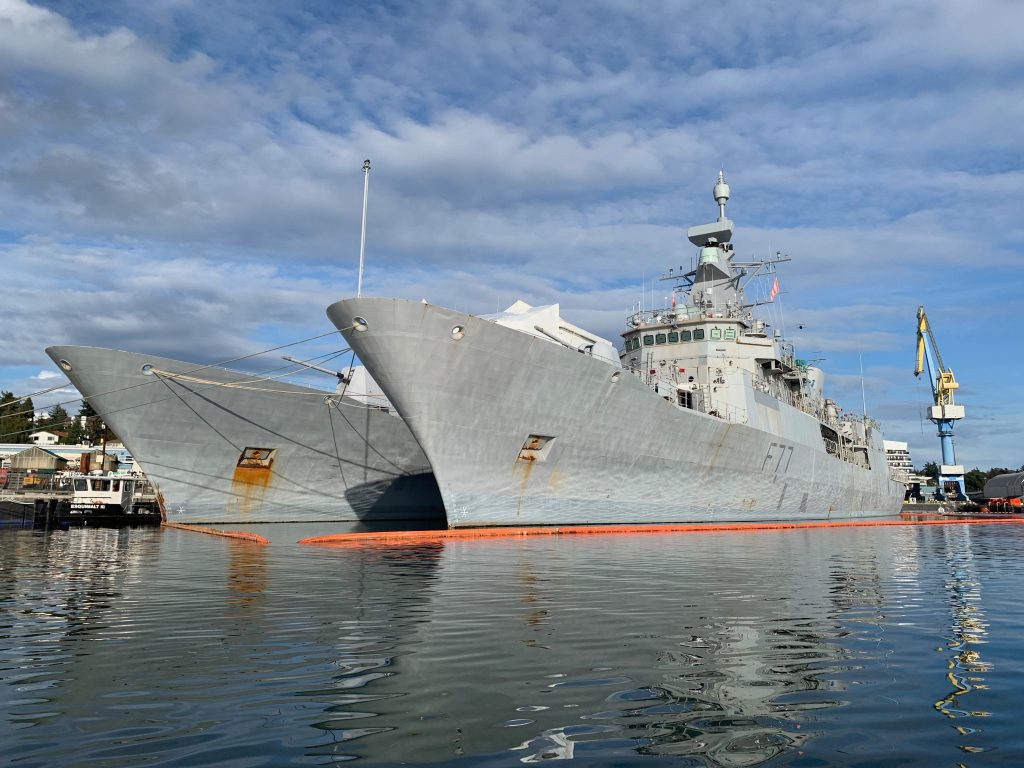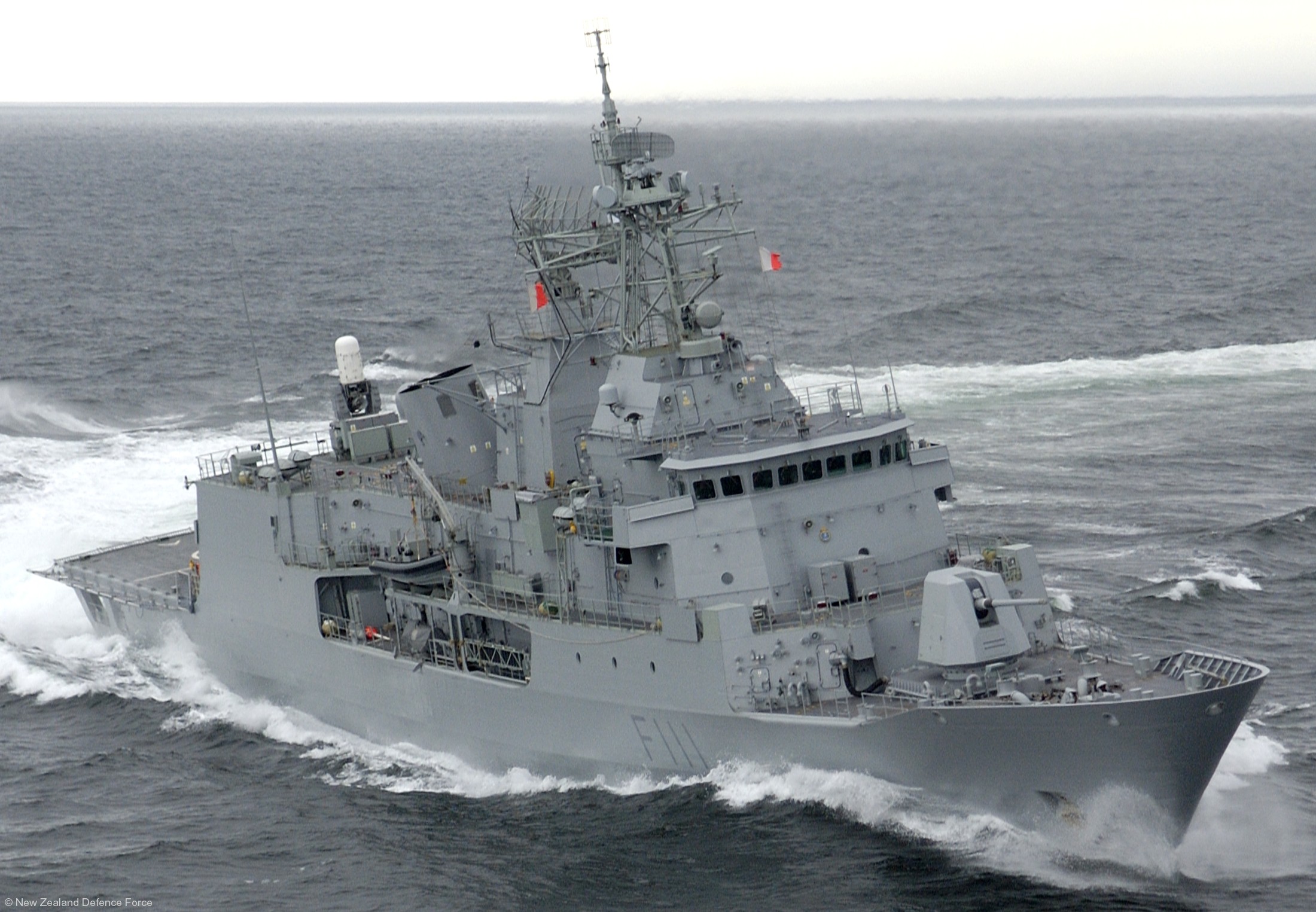I’ve just got back from Wellington, where ASPI was involved in Australia-New Zealand defence cooperation and policy discussions. As usual, we were hosted admirably by our Kiwi colleagues and the cultural and historical affinities between the two countries made for easy discussions.
But despite abundant good will, I think it’d be a mistake to conclude that we’ll always be able to work smoothly together. Future interoperability between the two countries will require effort on both sides. Simply put, Australia’s building a force structure capable at the top end of modern combat that’s suited for operations with American forces, and NZ is struggling to keep up.
Let’s start with naval forces. Australia’s new amphibious ships and Aegis-equipped destroyers will be delivered soon and both will represent a quantum leap in capability. The Australian Anzac frigates are being upgraded with state of the art phased-array radars and combat systems, making them highly capable combatants. NZ is already wrestling with the cost of the replacement of its own Anzacs, even though that won’t be until next decade.
Australia’s Air Force has been extraordinarily successful in making the case for recapitalisation. By 2022 essentially every major platform in its inventory will have been replaced. Australia will be the only country outside the US operating both the F-35 and the Growler electronic-warfare aircraft, while the RNZAF’s air-combat capability is a distant memory. Our maritime surveillance fleet will soon be a mix of manned P-8 Poseidons and Triton drones—the same mix as the US Navy’s—while the RNZAF ponders what it can do to replace its P-3s when the time comes.
The Australian Army is in the process of updating its helicopter fleets and has ambitious plans for doing the same with its protected mobility vehicles. While not as far along as the other two services in terms of winning approvals, it’s likely that at least some of Army’s goals for protected mobility will the realised—at a cost of several billion dollars. The scale of investment required is well beyond New Zealand’s modest means.
The NZ defence budget shows why. As well as drawing on a smaller resource base (a population of 4.4 million compared to 24 million), defence in NZ hasn’t had the same government (or public) priority as it has in Australia. Australia’s defence spending bottomed out at 1.6% of GDP and is now closer to 1.8%, heading to 2% if the government delivers on its funding promises (so far so good). This year’s NZ defence budget is still a little under 1.6% of GDP, even after a substantial increase for the first time in years, and had been as low as 1.1% a few years ago.
- Where are the Frigates?
- 4 Frigate Navy
- An Old or a New Dawn? Questions Hang Over New Zealand’s Defence Policy Statement
- The Cost and Benefit of Frigates
And it’s a smaller fraction of a smaller economy. Australia’s defence budget this FY is A$29.3 billion compared to New Zealand’s A$2.8 billion. Buying power is more important than GDP share when we’re talking force structure and clearly the NZDF has little chance of keeping up.
One option is to opt out of topshelf military capability for the most part, and to accept a role for the defence forces in peacekeeping and constabulary operations, perhaps with niche capabilities suited for more challenging environments. But, like all governments, New Zealand’s wants to have alternatives available to it in times of crisis, and wants to generate as many capability options as possible. The recent NZ Defence Capability Plan makes that clear:
The importance of the combat capabilities of the NZDF cannot be understated. It is these capabilities which underpin the overall utility, depth, and effectiveness of the NZDF, and thus its value to the Government and our partners. The NZDF must have the combination of personnel, equipment, training, and experience of working with other forces to allow the Government to make a credible valued contribution when it needs or wishes to do so, including in higher intensity environments.
The trouble is that military capabilities for high-intensity environments are progressively more expensive with each generation. And Australia might not be able to help as it has in the past. For example, Australia’s future frigates are likely to be substantially larger and more sophisticated than the current ones—and too expensive for NZ even to contemplate. There’ll be no more Anzac frigate programs.
But at least as a stopgap measure, Australia might be able to assist. If the government goes through with the proposal to replace our Anzac frigates early, we’ll have eight world-class warships looking for a home. What could be more appropriate than for our NZ allies to take charge of some of those recently upgraded vessels to replace their ‘fitted-for-but-not-with’ variants?
New Zealand’s additional $500 million over the forward estimates won’t go far towards providing extra top-end capability. But it could do a lot for interoperability of command and control and communications systems, or towards making the NZDF’s planned amphibious task group interoperable for regional contingencies with Australia’s soon-to-be greatly increased capability. The NZDF has already made some tough decisions based on resources. It’s in both our interests for our armed services to work well together and we need to be talking about how to make that happen.
 HMNZS Te Kaha with her new mast and radars during her modernisation refit in Canada
HMNZS Te Kaha with her new mast and radars during her modernisation refit in Canada
With the release of the Defence Capability Plan 2019 (in June 2019) as well as recent purchases and upgrades where do we stand.
The article goes on about the ANZAC replacement. New Zealand has only just started to look at an option for a replacement and no decision will be made for a few more years yet. The current ANZAC's are currently getting the sensors and weapons upgrades in Canada. New 3D radar, new air defence missile system and decoys, new sonar laser warning systems and various other new and upgraded systems including the new Lockheed Martin CMS330.
Yes, I agree that we need to get back to our 4 frigate squadron and a patrol squadron navy as well as out added capability in recent years of sealift and amphibious operations. The DCP19 stats that a second enhanced sealift ship will be purchased to work with HMNZS Canterbury and then Canterbury replaced by another enhanced sealift so we will be operating 2 LPD's or smaller LHD's (most likely LPD's)
The new DHV HMNZS Manawanui has greatly enhanced the dive and recovery as well the hydrographic section of the Navy.
The New Tanker HMNZS Aotearoa recently christened in South Korea will be commissioned in New Zealand mid-2020. She is the largest ship the RNZN will have ever operated to date. And will greatly enhance the Navy, as well as help our allies. She larger than our previous tanker with twice the displacement and can carry a third more fuel, water and stores than HMNZS Endeavour.
The DCP19 stats that the SeaSprites will be replaced but options won't be known till closer to the time of replacement as new tech and options come online.
The army over the last few years have had their upgrades with and added capability while not many people realise. From receiving the new MHOV trucks to the MARS-L personal weapon. Javelin anti-tank missile. The Direct Fire Support Weapon DFSW(A) H&K 40mm Grenade Machine Gun, Barrett M107A1 Anti-Materiel Rifle, Barrett MRAD Sniper Rifle. They have also slowly gained the knowledge to become an amphibious force, and with the added enhance sealift ship will greatly enhance this ability to project a small task force.
The LOV will be replaced in the next few years and the NZLAV will either be upgraded or replaced. This was a little bit of a grey area.
According to the DCP19 the Army to increase in size to 6000 personal.
The RNZAF... well yes the distant memory of our air combat unit still hurts and is a soar plumb in many Kiwi's mouths. Many will never forgive Helen Clarke for that.
However, the ageing P-3k's are being replaced by the P-8 Poseidon in 2022. The C-130H, replaced by the C-130j-30 Super Hercules around the same time. Maritime drones will also be purchased.







